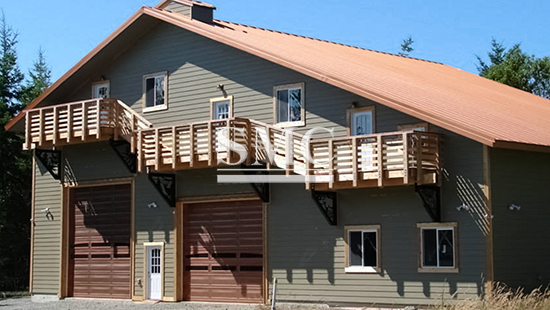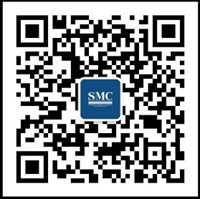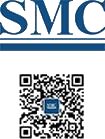
- Company overview The heart of SMC Vision & Philsophy Partnership Certifications Company culture
- Our service Design and Engineering Maintenance and Service Examine Production Line Upgrade and Transformation Storage and Logistics Processing, Trading and Distributor
- Management Our history Global responsibility Info Center
- Procurement center Internship
- Metal Steel Products Stainless Steel Products Aluminum Products Copper Products Galvanized Steel and PPGI Special Alloy Building Material
- Containers ISO Standard Container Equipment Container Storage Container Container House Refrigerated/Reefer Container Offshore Container Tank Container Container Fittings Container Trailer
- Gas Cylinder & Fire Extinguisher Cryogenic Liquid Cylinder Oxygen Gas Cylinder Storage Tank CNG Gas Cylinder LPG Gas Cylinder Hydrogen Gas Cylinder Nitrogen Gas Cylinder Industry Gas Cylinder Fire Extinguisher
- Metal Machinery Forming Machine Other Machinery Cutting Machine Processing Machine Bending Machine Block Machine Motor Spare Parts
- Mechanical Products Vehicle Industry Miscellany Mooring Equipment Marine Equipment Pressure Vessel Conveyor Belt Laser Equipment Bearing
- Electrical System Electrical Cable Automation Power Distribution Solar Power System Electric Protection System Transformer Production Line Lighting System
- Project Fiberglass Reinforced Plastic Plastic Pipes and Pipe Fittings Pontoon System
What are The Main Points of Installation and Use of Color Coated Board?(3)
Design matters
With all kinds of seams, connections, ribs and fastening facilities and surface treatments, basically any desired design effect can be achieved. In design, the color-coated board can be matched and coordinated with many construction materials such as concrete, wood, glass in both texture and style. The color-coated board has high strength and light weight, and can achieve special effects that cannot be achieved by using other building materials. Light weight means low load, giving more free space to the selection of slim building elements. The color-coated board has various colors, and it has a large selection in combination with stone, concrete, wood and other building materials. For construction projects that use metal materials and painted, the color-coated board is conducive to matching or adding the required color.
(1) Roof: The good appearance and excellent performance of the color-coated board have awakened the interest of architectural designers and homeowners in showing the roof. The roof no longer just needs to have design features to meet the functions of sheltering from wind and rain. The roof system made of color-coated panels can add the color of other architectural elements, and can obtain the effects brought by the wide range of changes in the roof panel spokes and joints. The slope of the roof of the color-coated board building is relatively steep, with a typical value of 3:12 or even higher, which is beneficial to the rapid drainage of rainwater. Roofs with small slopes are not easy to see. Generally, aluminized zinc light panels are used. For roofs with a slope less than 1/4: 12, it is more economical to use aluminized zinc light panels. Facts have proven that after 20 years of use, they still maintain excellent performance. Roof slabs are usually not placed directly on the roof but placed on a skeleton, which can be made of wood or steel. A 30-pound piece of paper or similar material is usually placed between the roof slab and the support. Part of the color-coated sheet roof is designed in the form of direct contact with the roof structure. Roof panels are usually flat and 10 to 24 feet wide. Small longitudinal ribs can be used for strength and molding. Use penetrating steel fasteners or concealed clips to secure the steel plate to the frame. The roof panels are stacked or welded together longitudinally. Welding methods are divided into batten type and snap-together type. The braid type can be subdivided into traditional box type, cap type and integral type. Welds typically have a height of about 3/4 to 2 inches. The roof panel welded by the bite and the traditional box method is fastened to the skeleton by hidden clamps or iron angles fixed on the weld seam. The integrally welded roof panel is fixed to the skeleton by iron hoop or hidden fastener . The movable iron hoop and iron angle design can prevent the roof panel from thermal expansion and contraction.
(2) Wall surface: Building panel manufacturers can provide color-painted wall panels of different shapes in a wide range, and the appearance of wall panels and the required building effects in all areas of the wide front can be completely consistent. High-quality color-coated boards ensure consistent color and appearance of the steel sheet throughout the project. Similarly, because the same materials can be used to minimize the connection and transfer technical problems, parts (trimwork, stops, copings) that have a key impact on the overall design effect can use the same materials, colors and deal with.

Maintain
Maintenance during service can extend the life of prepainted panels. Although the factory-painted building panels have a much longer life than usual painted panels, they still need to be thoroughly cleaned, and no automatic maintenance is required in places where there is automatic rainwater cleaning, such as roof panels. Cleaning can remove the accumulated corrosion and maintain the beautiful appearance of the building without painting. Places that need to be cleaned include brackets, undersides of drip eaves, warehouse door panels, and grooves on the back of drip eaves.
(1) Cleaning: Normally, most of the dust and residues on the surface area of the steel plate can be removed with clean water. Theoretically, cleaning is required at least every six months, and cleaning should be more frequent on coasts with a lot of salt fog and places with heavy industrial dust. For stubborn stains that cannot be washed off, you can use the following methods to clean with a weak detergent or household ammonia. In any case, scrub an inconspicuous small test before cleaning it over a large area. Take a spoonful of "Tide" laundry detergent (or other detergents with a phosphate content of less than 0.5%) and dissolve it in 5 gallons of hot water; or take a cup of household ammonia and dissolve it in 5 gallons of room temperature water. Do not use ammonia and any bleach Mix; do not mix detergent and bleach without permission. If washing and bleaching is required, use a bleach-containing detergent. Using any of the above detergents, use a saturated cloth, sponge, soft brush or low-pressure spray head to clean the surface of the steel plate from top to bottom to avoid wiping streaks and bright spots. Detergents or industrial detergents are not recommended as they will damage the paint. Water-soluble detergents such as "Omo" are very effective and can be used. If fungus and mold are present, the above methods cannot be removed. It is recommended to use a bleach-containing detergent, such as bleach-containing "tide". The surface of the steel plate after washing needs to completely remove the detergent residue.
(2) Make-up paint: If scratches occur during installation and use, it may be necessary to make-up paint on the defective part. Improper or excessive touch up can damage the entire surface. Scratches that appear inconspicuous at 6 feet are best not repaired because normal wind erosion can cover them. To repair the paint, you only need to repair the peeling part of the paint. Before repainting, you need to use alcohol to remove dirt, paraffin and other dirt. It is not recommended to use spray paint to repair large areas, because spray paint does not air dry as well as factory pre-painting. Ask the building board manufacturer or coating supplier for a suitable spray repair system. It is not recommended to use aerosol or spray to repair scratches. The best repair tool is a high-quality 1 / 2-inch or smaller paint brush. If the maintenance is carried out as described above, the color-coated board will maintain its original color for a long time.
For more information, please visit: https://www.shanghaimetal.com/prepainted_galvanized_steel_coil_ppgi-384.htm
For our full list of products that we offer check out our website here. Be sure to join the conversation in our LinkedIn group, Facebook, Twitter.
Try also our We Chat by scanning the QR code below.
Hales H.//SMC Editor

